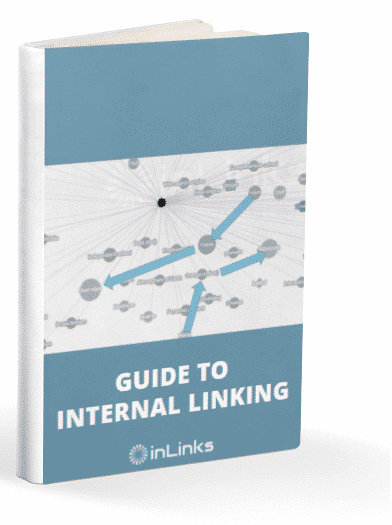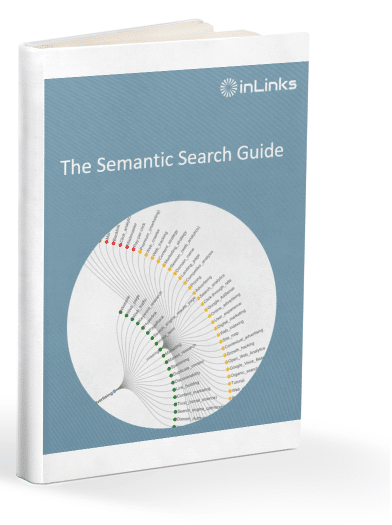At InLinks, you can get started for free and grow according to your needs.
You can get the most out of your subscription if you spend some time looking at how the credit system lets you grow at your own pace.
We give you a product that would normally cost thousands of dollars a month for less than 50.
It all starts with “Credits”
When you buy a level 1 subscription, we will give you 100 credits.
Credits are renewed every month and unused credits will be lost.
The number of credits in each subscription level also indicates the maximum number of pages you can add to your project (100 in level 1, 205 in level 2, etc.).
Everything you do “eats” credits:
- adding each new page costs 1 credit
- audit costs 5 credits
- creating a content brief costs 5 credits
This means that if you add 100 pages to your project at once, you don’t leave yourself any credits this month for auditing existing content or creating and/or optimizing content briefs.
A good tip: don’t add the maximum number of pages to a project at once, because it will consume all your credits and you won’t have any left to do an audit or create a content brief.
When pages are added to the system, you can, without using more credits:
- Associate topics to pages (and pages to topics)
- Modify the schema created
- Modify the links created
In other words, for 1 credit once only, you can manage your About Schema and optimize your internal links for as long as you have the account. Next month you can use spare credits to optimize content.
What happens if I delete some pages and add new ones?
If you are at the limit of the number of pages you can add, you will probably have to upgrade to add more. You CAN delete pages if you wish, which will let you add more to replace them. However, you will lose any schema and links generated on those deleted pages and each page you add will use up one credit on the month it is uploaded so that we can analyze the pages you add.
Auditing Content Costs Credits
When you click on the “Audit”, button, you are about to use up 5 credits. This analysis in fact has to analyze up to 10 other pages that we use to build a knowledge graph around the phrase you use.
Once we have the knowledge graph, re-analyzing is less complex. Even so, you will use 1 credit every time you:
- Press the “Update Analysis” button on the content brief editor
- Change a comparison URL to one of your choice (in the serps tab)
- Revert back from analyzing the text editor content to the live URL
It is important, at lower subscription levels, to avoid reanalyzing your content every time you change a sentence
Make sure your content writers understand this
Creating a Content Brief is the same as an Audit
Just like auditing an existing page, a content brief also needs to look up 10 pages to create a knowledge graph. It costs 5 credits to create the Content Brief and then one credit each time you reanalyze any updated text you have written.
What are Manually Added Credits?
When we carry out a setup for you, or there has been an error of our own doing, usually discussed through the support channel, we might add some credits to help address the issue. These credits will remain until the next billing cycle, when your credits should reset to your account maximum in any event.
If Level 1 is 100 Credits, why is Level 2 not 200 credits?
Each time you increase your subscription, you are rewarded with incrementally more credits. We figure that people ask “can I have a discount for scale” so much, that we should build this into the pricing from the start. Here is a table showing how the resources increase as you go up the levels:
Is there a maximum number of pages I can have?
Yes – regardless of how you use credits, the maximum number of pages you can have on your account at any one time is equal to the number of credits that you get each month. So 100 pages at level 1 and 205 pages at level 2 etc. Having the pages on the system does not cost a credit every month – only on the month it is added – but the overall page limit is based on your level.
How to Maximize your use at low levels
Don’t add all your sites to the project at once. Add the 10-20 most important ones first, so that you still have enough credits to start auditing them.
If you want to go faster, you can of course go to higher levels right away. The more pages in your project, the better our Knowledge Graph is, and the more internal links we can find for you.
Read also: SEO with low budget



We’re using this tool daily and loving it. I’m sure this tool will be huge given time. I have numerous questions about the topic charts, such as knowing when to create a page for a given entity and how to strucutre the page . For example pension is related to employment , but how do I know what needs a page and what doesn’t. For SEO purposes, does an entity mean create a content silo around this, or does it mean create a page. lots of questions 😀 but im sure I will learn in time.
Interesting. Im wanting to use inlinks on my e-commerce website pavingshopper.co.uk but I’m under how lnlinks will work on an e-commerce site as opposed to a content site. I’m going to do some more research I think
Hello Paul, we have written a dedicated article on how to use Inlinks for an E-commerce website: https://inlinks.com/help/how-to-use-inlinks-for-an-e-commerce-website/
Great Tool, I’ll ask my agency (https://www.digisoftsolution.com/) owner to check out this amazing tool.
I have two websites I would like to use this for:
montenegroguides.co
montenegrodigitalnomad.com
Would this need two separate accounts, or can I have one account and use the credits across both sites?
They’re not massive sites, both under 100 pages, but with a lot of growth planned for this year.
Hi Jonathan – You only need one account… you can have lots of sites on one account, but the limiting factor is usually the combined number of pages. You do not need ALL the pages on the system to be effective, but it would probably be wise to budget based on something a little rather than a level 1 account to cover your bases.
We have an online software shop with probably 25,000 products. And there are maybe 20 money pages/ landing pages which we would like to promote with internal links.
I do not understand how your pricing works. Do I than need credits for 20 pages or for 25,000 pages?
And how much is a credit?
I am sorry that this page does not explain it well enough. We have truly tried to be as clear as we can.
If you have 25,000 products, you have two choices. 1: Add all 25,000 pages – which will require an enterprise server (in the region of $2,000 per month) OR
If you have 20 money pages, you need to add enough rich content pages to give those money pages CONTEXT. So I would add those 20 pages and then add 80 pages from the blog (if you have that many) to support those page with context relevant links. This would mean you can do very well with $49 per month.
I hope this helps.
esque vous pouvez aussi faire des plan pour les agences seo? nous sommes une agence https://www.tivox.fr
Bonjour, merci pour votre commentaire. Nous avons bien des plans pour les agence SEO, cela débute par le niveau d’abonnement 4 indiqué sur le tableau de cet article. Si vous souhaitez en discuter plus en détails, je vous invite à programmer un appel via mon calendrier: https://calendly.com/hassani-karim/30min?month=2024-05
Leave a Reply
Want to join the discussion?Feel free to contribute!